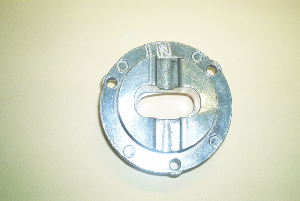The United States and India launched a new blitz to boost economic, trade and financial cooperation on March 17. They signed a framework for cooperation on trade and investment to build on trade growth, which has more than doubled in …
Continue reading
Tag Archives: Kinetic Die Casting Company
Reasons for Buying from Kinetic Die Casting Company
Reasons for Buying Die Casting Parts from Kinetic Die Casting Company. The reasons for buying aluminum parts and zinc parts from Kinetic Die Casting Company are many. We have many happy customers that talk about our service and quality. Here are some of the reasons that our customers are delighted to buy die castings from our company:
Excellent Customer Service –
Our customers know that when they call us with a question, a human will answer the phone promptly and we will answer their questions immediately.
Fast Die Casting Part Deliveries –
We typically ship die castings in less than five (5) weeks. In fact, we ship die casting orders the day we manufacture die castings, most cases. Many manufacturers wait six to eight weeks for their parts, sometimes longer.
Low Quantity Die Casting Part Manufacturing Welcome –
We are here to manufacture your die castings in lower quantities as well as high quantities. We will accept Purchase Order quantities of under 100 pieces, if that is the quantity our customers need. We do not have a minimum order quantity (MOQ). We will accept orders of quantities of 10 parts up to 300,000 parts.
Competitive Die Casting Part Prices –
Our pricing structure is very competitive to die casting companies all over the world. Especially, when people consider the rapidity of product shipments. Click to: Request Die Casting Part Prices
Certificates of Manufacturing –
With every die casting part shipment we will include certificates of US manufacture, certificates of conformity and certificates of material analysis.
Wouldn’t these benefits listed above give your company a manufacturing advantage? Kinetic Die Casting Company can be your die casting parts supplier also. Contact us today and get a free die casting part proposal.
Kinetic Die Casting Company
www.kineticdiecasting.com

Kinetic Die Casting utilizes die casting to manufacture parts like aluminum car parts, airplane parts, lighting parts and much, much more. If you would like to request a quote, please visit our website:Die Casting quote
Drumheller Industries Die Casting Tooling
Drumheller Industries
10967 Tuxford Street
Sun Valley, California 91352
Kinetic Die Casting Company bought Die Casting Tooling at the Drumheller Industries auction on Tuesday September 12, 2012. Much of the zinc die casting tooling were unit die holders to fit small die casting tooling inserts.
Drumheller Industries, located at 10967 Tuxford Street in Sun Valley CA. 91352, made zinc die casting parts for several years. Drumheller Industries sold die cast unit die inserts to their customers as die casting molds but not the die casting holders.
These Drumheller customers will need to use the holders that we purchased to save them money on set up fees on their next production run of zinc die casting parts. The Drumheller inserts and many of their zinc die casting tools fit in our new unit die mold bases. In some cases, these die casting tools can be modified to fit other inserts.
Sadly, the Drumheller customers were given a only few days notice to pick of their die casting molds or insert tools before they closed their doors permanently before the auction. We here at Kinetic Die Casting Company are sad that another manufacturer with a long history in California closed their doors. It is hard to believe that so many manufacturers in California are facing problems that are forcing them to close their doors.
Kinetic Die Casting Company is glad to offer assistance to the manufacturing customers that were doing business at Drumheller Industries. In many cases we can save these manufacturing companies money by using the same mold bases and trim dies that were sold at the Drumheller auction.
Call 800-524-8083 for an appointment to come and see our operation:
Kinetic Die Casting Company
6918 Beck Avenue
North Hollywood, CA 91605

Popular Die Cast Alloys In Today’s Die Cast Industry
Popular Die Cast Alloys In Today’s Die Cast Industry. In past history, tin and lead were the preferred metals in the die casting procedure. These die casting alloys were utilized to mold many materials, but their use decreased in the early 1900’s when aluminum and zinc came into the scene. In the years that ensue, die casting alloys in the form of copper and magnesium became extensively utilized as soon as these metals became more available to the die casting industry.
Die casting has arrived far beyond the original procedure of utilizing low pressure injection techniques. Today, die casting alloys are forced into molds, or “dies”, via very high pressures that surpass 4000 lbs making parts like aluminum hardware. for every square inch. These die casting methods run from squeeze casting all the way to semi-solid casting. The contemporary die casting methods used today create quality metal products that exhibit superb integrity, and highly smooth surface finishes.
Currently, aluminum, copper and zinc are the alloys for die casting. Aluminum tops the list, although it is most often alloyed with highly-fluid silicon material to avert reduction and fracturing owing to high temperatures. Manufacturers also favor the use of copper due to the rigidity of the material, its non-corrosiveness, and its condensed ductility. On the other hand, die cast material created of zinc can be manufactured with thinner walls and molded to closer tolerances due to its fluidity and its ability to melt with no trouble in very high temperatures. When alloyed to aluminum, it fabricates greater strength and inflexibility to the completed die cast part.
Kinetic Die Casting is a california die casting companycalifornia die casting company that manufactures die cast parts. If you would like more information or request a quote, visit our website:Kinetic Die Casting Company
Aluminum Aircraft Parts Die Castings
Aircraft or better known as Airplanes are large, very large. They are large because they are designed to carry things, lots of things. Airplanes carry mail, gifts, shipments, food, packages, baggage, and people. Airplanes are the fastest transportation for “things” and people today. Airplanes are fast because they travel through the air. Because airplanes are big and travel through the air, the airplane construction materials need to lightweight and strong. Aluminum is used for most of the airplane components because it is lightweight and strong. The overall airplane part weight is kept down so the airplane will be able to carry more “things”. Therefore, aluminum is used a lot.

http://www.kineticdiecasting.com/aircraft_part_pictures.html
Aluminum Aircraft Part Pictures
https://www.kineticdiecasting.com/kdcgallery/201.01_1.png
Die casting is the preferred manufacturing process for making Aluminum Aircraft Parts. The reason is because the aluminum die casting process has a lot of advantages over other high volume aircraft part manufacturing processes.
-
Aluminum Aircraft Parts Produced as Die Castings:
- Die Casting is less expensive because more than 500 or 1,000 parts can be produced each day.
- Die Casting hold tolerance typically to +/- 0.002″ after the die casting tool is approved.
- Aluminum weighs 1/3 by volume of a similar part in steel.
- Aluminum die casting parts are very strong.
- Die Castings are produced near “net shape”, reducing additional manufacturing costs.
- Die Casting Tooling reliably manufacturers parts repeatably over several thousand parts.
- Aluminum die castings do not break down over time as other materials break down.
- Aluminum die castings have an aesthetically pleasing surface finish.
- Die Casting parts look good after paint or polish.
-
Kinetic Die Casting Company makes many types of aircraft parts. We make:
- Airplane distributor caps
- Aircraft wheel cove locks
- Cargo Plane bearing housing parts
- Airplane piston heads
- Many others….
Kinetic Die Casting manufactures die casting metal parts creating products like roofing tile molds, lighting parts, and military parts. If you would like more information about Kinetic Die Casting, visit our website:Kinetic Die Casting Company
A List of Alloys Used For Die Casting
A List of Alloys Used For Die Casting. The method of preparing metals that are found normally in the earth’s crust for appropriate use by man is through mining, removing, and finally joining these extracted metals into alloys. Most of the ordinary metals in use today are not actually in their pure form. They are as an alternative a combination of this and that metal. This practice of alloying offers us a new and improved version of the metals. Certain of these metals in the earth’s crust are suitable as die casting substance. Nonetheless, mixing them with other choice metals into a compound make them sturdier and more appropriate alloys for die casting.
A listing of die casting alloys would include magnesium, zinc, aluminum, lead and tin and copper alloys. Specialist in the die casting industry would be well versed in the personality characteristics of these alloys. Picking the correct metal alloy for a special purpose will spell the success of a product. Here is an general idea of each die casting alloy’s qualities and characteristics:
Copper alloys are corrosion resistant metals. They have high electrical conductivity and are utilized thus.
Kinetic Die Casting manufactures products like heatsink die casting, aluminum housings, and lighting fixtures. If you would like more information, please visit our website:Kinetic Die Casting Company


